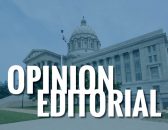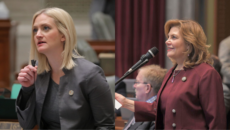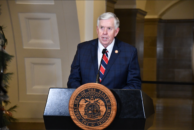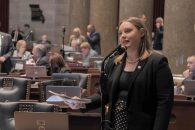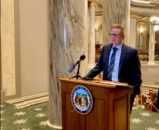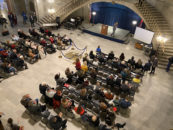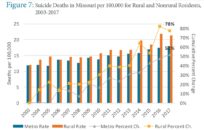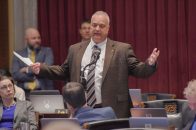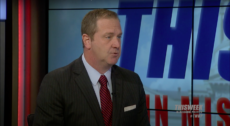JEFFERSON CITY, Mo. — Population shifts across Missouri could lead to a complicated redistricting process, the state demographer said Tuesday.
The state’s population grew to exceed 6 million, per the 2020 data, with more people living in larger communities while smaller communities shrink. The state’s congressional maps are expected to change wildly; CD 1 and 8 would need around 50,000 more people each to balance the state, while surrounding districts do not have the population to lend, according to State Demographer Matt Hesser.
Hesser presented the data before the House Special Committee on Redistricting Tuesday afternoon.
“The lines will have to shift significantly for you to be able to rebalance the population amongst these congressional districts,” Hesser said. “This is where redistricting gets hard, especially where populations are moving so much.”
Missouri’s population rates haven’t kept pace with the national growth rate, trailing nearly 5 percent behind for the decade, according to the 2020 data. Hesser said Missouri’s representation in Congress could be in jeopardy in the future if the trend continues and noted the number of congressional seats granted to the state had halved over the past century.
Hesser said there would be similar changes to state legislative districts, with some districts seeing population gains or losses of around 10,000 people. Hesser said the new maps would have to account for population loss in the southern part of the state while the Kansas City region saw substantial growth. St. Louis was the only metropolitan region that reported a decrease in population over the decade.
Hesser noted there was a limited amount of data available, with a full release expected in November or December. The committee hopes to have enough information to have a bill ready to file the first week of session, according to Chair Dan Shaul. Shaul said the committee would do its work faster if a special session were called for it, but would meet monthly if that were not the case.
“I hope people understand the balancing act that’s going to take place between the commissions is going to be quite a challenge,” Shaul said. “I feel with this committee that we’ll be able to produce something that will be great for the state of Missouri.”
According to the apportionment results released earlier this year, Missouri is set to retain its eight congressional seats while it lost one after the 2010 census data.
Missouri’s redistricting process has changed since the last census, finally settling on the current version with the passage of Amendment 3 in November. While a constitutional amendment enacted by voters in 2018 established a nonpartisan state demographer position to redraw the map, the redistricting process now falls to two bipartisan commissions appointed by the governor, one representing each chamber. The House and Senate Independent Bipartisan Citizens Commissions began their work last month.

Cameron Gerber studied journalism at Lincoln University. Prior to Lincoln, he earned an associate’s degree from State Fair Community College. Cameron is a native of Eldon, Missouri.
Contact Cameron at cameron@themissouritimes.com.



